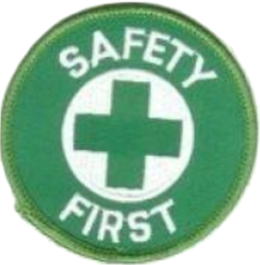What Is an EMR Rate?
Experience Modification Rate (EMR) has a strong impact on your business. It is a number used by insurance companies to gauge both past cost of injuries and future chances of risk. The lower the EMR of your business, the lower your worker compensation insurance premiums will be. An EMR of 1.0 is considered the industry average.
If your business has an EMR greater than 1.0 the reasons are simple. There has been a worker compensation claim that your insurance provider has paid. To mitigate the insurance company’s risk, they raise your worker compensation premiums. The bad news is this increased EMR sticks with you for 3 years.
Want to know how Experience Modification Rates are calculated?
The base premium is calculated by dividing a company’s payroll in a given job classification by 100, and then by a ‘class rate’ determined by the National Council on Compensation Insurance (NCCI) that reflects the inherent risk in that job classification. For example, structural ironworkers have an inherently higher risk of injury than receptionists, so their class rate is significantly higher.
A comparison is made of past claims history to those of similar companies in your industry. If you’ve had a higher-than-normal rate of injuries in the past, it is reasonable to assume that your rate will continue to be higher in the future. Insurers examine your history for the three full years ending one year before your current policy expires. For example, if you’re getting a quote for coverage that expires on January 5, 2008, the retro plan will look at 2004, 2005 and 2006.
NCCI has developed a complicated formula that considers the ratio between expected losses in your industry and what your company actually incurred, as well as both the frequency of losses and the severity of those losses. A company with one big loss is going to be ‘penalized’ less severely than a company with many smaller losses because having many small losses is seen as a sign that you’ll face larger ones in the future.
The result of that formula is your EMR, which is then multiplied against the manual premium rate to determine your actual premium (before any special discounts or credits from your insurer). Essentially, if your EMR is higher than 1.00, your premium will be higher than average; if it’s 0.99 or lower, your premium will be less.
How does a high EMR affect costs?
An EMR of 1.2 would mean that insurance premiums could be as high as 20% more than a company with an EMR of 1.0. That 20% difference must be passed on to clients in the form of increased bids for work. A company with a lower EMR has a competitive advantage because they pay less for insurance
How do I lower EMR?
The good news is that EMR can be lowered. If you need help in putting an effective safety program in place that eliminates hazards and prevents injuries contact us at Benton Safety Consultants. Remember, No injuries equal no claims.
In the real world, injuries will happen, but the response can help keep EMR from increasing as much as it could without proper management. Having a plan to manage injuries and workers compensation claims is a must to get control of the EMR.
Reducing EMR gives you an edge over your competition when bidding out work and save money. Construction general contractors and owners are realizing the benefits of low EMR numbers and often prequalify companies before they even look at bids. It would be unfortunate to lose business and money because of high EMR.


What does Mexico companies use instead of the EMR?
LikeLike